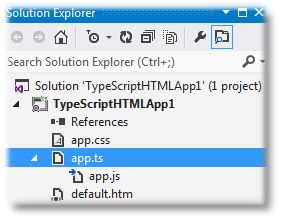如何从 Swagger 模式生成基本的 TypeScript 接口?接口、模式、基本、Swagger
I'm looking for a way to generate simplistic TypeScript interfaces from a Swagger schema. Most solutions I find are needlessly complicated.
I would like to generate interfaces like this:
export interface IBar {
a?: string;
b: number;
c: Date;
baz?: IBaz;
}
export interface IBaz {
d: number;
color: Color;
}
export enum Color {
RED = 0,
GREEN = 1,
BLUE = 2,
}

From a schema like this:
{
"x-generator": "NSwag v11.14.0.0 (NJsonSchema v9.10.24.0 (Newtonsoft.Json v9.0.0.0))",
"swagger": "2.0",
"info": {
"title": "",
"version": ""
},
"schemes": [],
"consumes": [
"application/json"
],
"produces": [
"application/json"
],
"paths": {
"/api/Foo/GetBarDescriptions": {
"get": {
"tags": [
"Foo"
],
"operationId": "Foo_GetBarDescriptions",
"parameters": [],
"responses": {
"200": {
"description": "",
"schema": {
"type": "array",
"items": {
"type": "string"
}
},
"x-nullable": true
}
}
}
},
"/api/Foo/GetBar": {
"get": {
"tags": [
"Foo"
],
"operationId": "Foo_GetBar",
"parameters": [
{
"type": "integer",
"name": "id",
"in": "query",
"required": true,
"x-nullable": false,
"format": "int32"
}
],
"responses": {
"200": {
"description": "",
"schema": {
"$ref": "#/definitions/Bar"
},
"x-nullable": true
}
}
}
},
"/api/Foo/SetBar": {
"post": {
"tags": [
"Foo"
],
"operationId": "Foo_SetBar",
"parameters": [
{
"name": "value",
"in": "body",
"required": true,
"schema": {
"$ref": "#/definitions/Bar"
},
"x-nullable": true
}
],
"responses": {
"204": {
"description": ""
}
}
}
}
},
"definitions": {
"Bar": {
"type": "object",
"additionalProperties": false,
"required": [
"B",
"C"
],
"properties": {
"A": {
"type": "string"
},
"B": {
"type": "integer",
"format": "int32"
},
"C": {
"type": "string",
"format": "date-time"
},
"Baz": {
"$ref": "#/definitions/Baz"
}
}
},
"Baz": {
"type": "object",
"additionalProperties": false,
"required": [
"D",
"Color"
],
"properties": {
"D": {
"type": "number",
"format": "decimal"
},
"Color": {
"$ref": "#/definitions/Color"
}
}
},
"Color": {
"type": "integer",
"description": "",
"x-enumNames": [
"RED",
"GREEN",
"BLUE"
],
"enum": [
0,
1,
2
]
}
},
"parameters": {},
"responses": {},
"securityDefinitions": {}
}
解决方案
Not sure if that's a sane way to do this, it's the first time I'm playing around with Swagger.
I bumped into the following link and pasted the schema from the project I integrate with. From the top 'Generate Client' menu I chose one of the TypeScript presets and it generated a minimal project where I could extract the bits I needed, interface and classes, etc.
http://editor.swagger.io/#/
I tried running your schema. Here's a small excerpt of the generated code:
export interface Bar {
"a"?: string;
"b": number;
"c": Date;
"baz"?: Baz;
}
export interface Baz {
"d": number;
"color": Color;
}
/**
*
*/
export type Color = "0" | "1" | "2";
Maybe with a bit more tweaking it can make exactly what you're looking for.
Further reading may be about tools like https://github.com/swagger-api/swagger-codegen but the online web editor is a quick and dirty way to do this.









